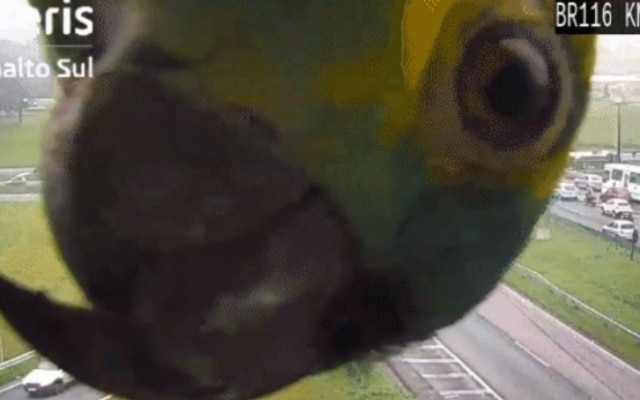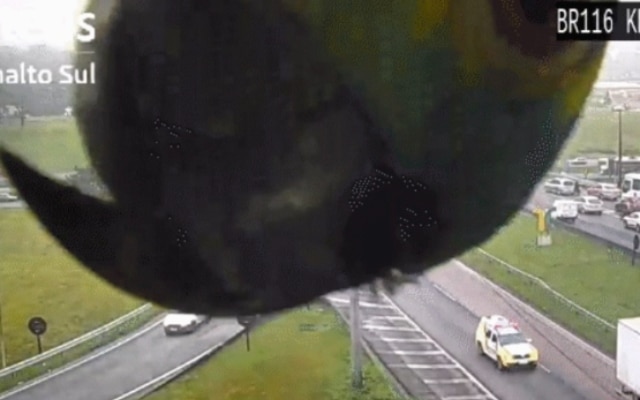“This morning we received a very special visit in one of the cameras of our CCTV circuit at km 115 of BR-116/PR in Curitiba. The species was identified as a parrot – scientific name Amazon aestiva. Just watching,” they tweeted.

Typically, their Twitter feed features mundane scenes of daily traffic. However, this particular day stood out due to the parrot’s cheerful presence. The video garnered over 293,000 views on Twitter, with comments ranging from “What a beautiful thing” to “Haha, that was good” and “Playful parrot! LOL.” The video even made its way to “Good Morning America.”
The turquoise-fronted Amazon, or Amazona aestiva, is a larger parrot species commonly found in South America’s woodlands, savannas, and open areas, specifically in Brazil, Paraguay, Bolivia, and northern Argentina. These parrots are recognized by their vibrant green bodies, blue foreheads, and yellow crowns.

According to eBird, “The amount of yellow on the head varies between individuals and regions; some having mostly yellow faces. The amount of red or yellow on the shoulders also varies. In-flight shows large red patches on the inner wings.”
This species is a popular choice as a pet or companion bird. As noted by Animals Wiki, “The turquoise-fronted Amazon was one of the many species originally described by Linnaeus in his 18th-century work, 10th edition of Systema Naturae. Its specific epithet is the feminine form of the Latin adjective aestivus, ‘of the summer.’”
Known for their longevity, turquoise-fronted Amazons can live between 50 to 60 years and produce a variety of sounds, including whistles, shrieks, and yapping notes. Despite their popularity, their populations are in decline and are listed as “near threatened” by the International Union for Conservation of Nature.



